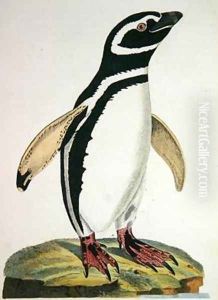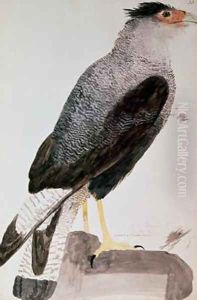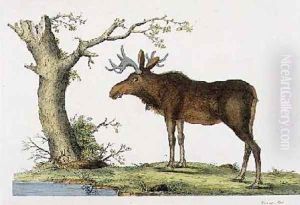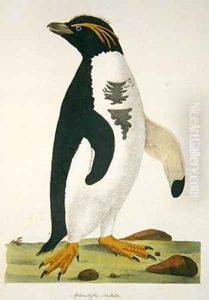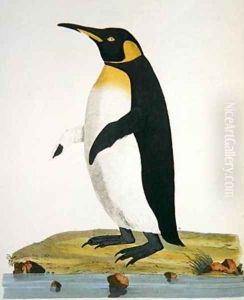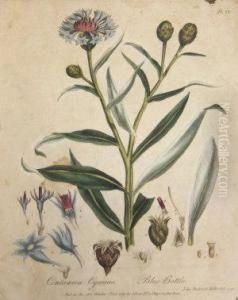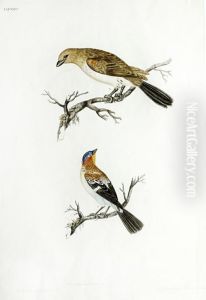John Frederick Miller Paintings
John Frederick Miller was an English illustrator and natural history artist born in 1759. He was part of a family deeply involved in the arts, with his father, Johann Sebastian Müller (also known as John Miller), being an accomplished engraver himself. This familial background immersed Miller in the world of art and natural history from a young age, providing a rich foundation for his future career.
Miller's work is primarily recognized for its intricate detail and accuracy in depicting flora and fauna. His contributions to natural history illustration were significant during a time when European explorers were avidly collecting and documenting new species from around the world. Miller capitalized on this curiosity and the burgeoning field of study by producing works that were not only scientifically valuable but also aesthetically pleasing.
One of Miller's most notable works is his illustrations for 'Cimelia Physica. Figures of rare and curious quadrupeds, birds, &c. together with several of the most elegant plants', which he produced in collaboration with George Shaw, a fellow naturalist. Published in the late 18th century, this work featured a series of plates that were remarkable for their vividness and attention to detail, contributing significantly to the scientific and artistic knowledge of the time.
Despite his contributions, John Frederick Miller's career was relatively short-lived. He passed away in 1796, at the age of 37, leaving behind a legacy that would be appreciated by future generations of naturalists and art historians. His work remains a testament to the early efforts of cataloging and understanding the natural world through art, capturing the beauty and diversity of nature in a way that few of his contemporaries could. Miller's illustrations continue to be studied and admired for their contribution to the intersection of art and science, illustrating the critical role of artists in the scientific explorations of the 18th century.
